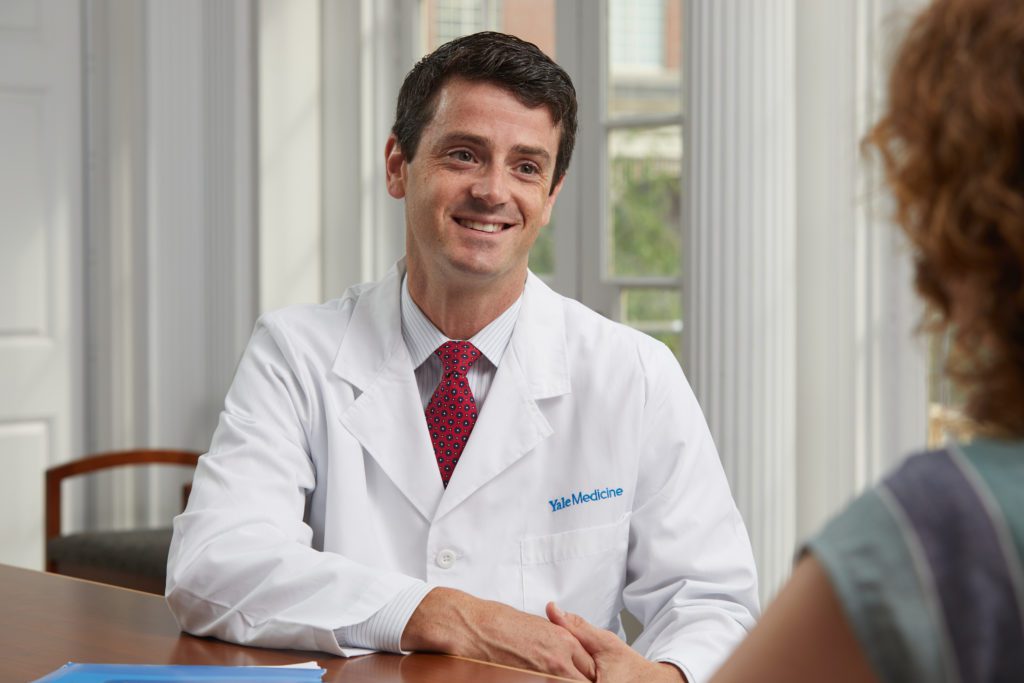The pandemic hasn’t been great overall for our health—so many of us are dealing with issues from increased stress to weight gain. But did you know that doctors are also seeing a spike in foot injuries and other conditions? That’s right—moms especially are prone to everything from toe fractures to chronic aches and pains. We asked Sean Peden, MD, Yale Medicine foot and ankle orthopedic surgeon and assistant professor, orthopedic foot and ankle specialist, Yale School of Medicine, to explain why he’s seeing more moms in his office than ever—and how we can protect our feet.
What are some of the most common foot conditions you’ve been seeing in the past two years, especially among moms?
Why are you these becoming more common, especially now?
Moms are extremely active day to day, with stopping and starting, driving, etc. This puts repetitive loads on the plantar fascia and Achilles tendon. These problems are highly related in that they are both caused by calf muscle tightness, overuse, and footwear problems. These are becoming more common during COVID because of stress, weight gain, poor footwear in the house, and irregular exercise.
I am certainly seeing many toe fracture because of the pandemic. More and more people are at home all day, very active, with no footwear. This is a perfect scenario to create toe fractures, most of which occur from banging your feet on furniture. Prevent this by wearing a solid supportive “house shoe.””
Do you have any other tips for preventing these painful conditions?
Prevent these conditions by making the time to stretch as part of a regular fitness routine. We all would love to have an hour a day dedicated to exercise, but that is not realistic for many moms. Finding 5-10 minutes to stretch, at least a few times a week, is more realistic.
Again, wear good shoes. Flimsy slip on shoes are not protective. Have a few good pairs of shoes for around the house and quick errands. Have another few pairs of shoes for busy active days outside the house.

Sean Peden, MD, Yale Medicine foot and ankle orthopedic surgeon and assistant professor, orthopedic foot and ankle specialist, Yale School of Medicine
Got it – so all slippers are not made equal?
The best kind of slippers are both comfortable and supportive. Support means it holds and protects your foot, rather than just something soft. Looks for something with at least some degree of support for the sole of the foot. The best shoe for someone with foot pain who is working for home would be a combination of a slipper and a shoe, a “house shoe” or “house slipper,” which is supportive yet comfortable.
Sheepskin-lined boots and slip on shoes you can wear without socks are a favorite among moms who want to get out the door, fast. Are they bad for our feet?
This is not always needed. Certain shoes are fine without socks. But wearing socks, even with these soft shoes, will help preserve your nice shoes and keep them softer longer by absorbing sweat and oils. Second, socks will prevent friction on your feet. My rule would be, if you are doing a short errand with limiting walking, it is probably OK to go sock free. If you are going to be walking in a large store, or on your feet for more than a few minutes at a time, wear socks.
I read that doctors were seeing a lot of chilblains last year and it was sort of unproven if this was “COVID toes” or a result of going barefoot. Is COVID toes a recognized condition at this point?
I have not seen this particular problem as much. This is not a recognized condition in the orthopaedic literature.
Anything else you’d like to share?
Caring for your feet is critical. This time of year, the heaters turn on the, the weather worsens, and dry feet and cracked nails become a real issue. Take the time to take care of your feet, perhaps by buying yourself a good at home pedicure set, or treating yourself.
This story is sponsored by Yale Medicine.

